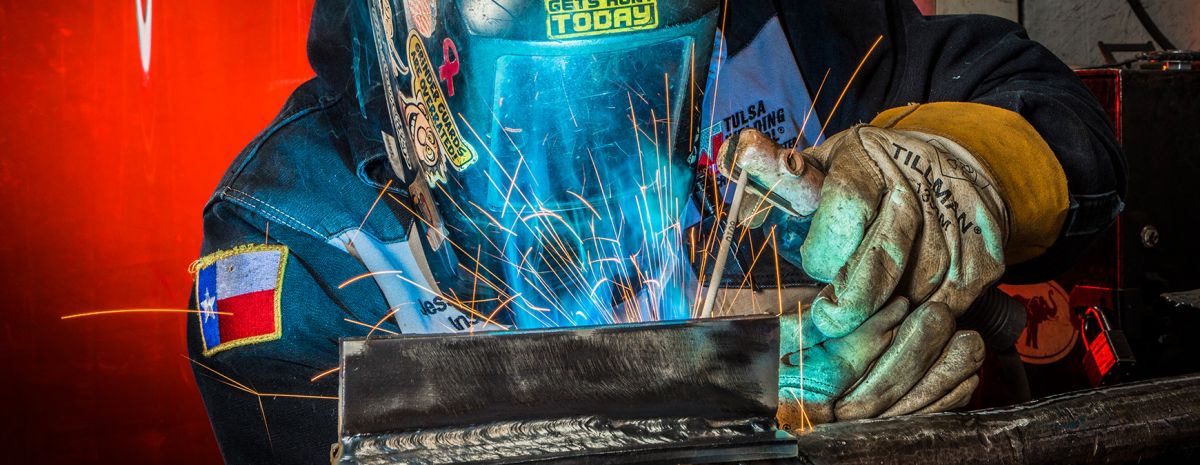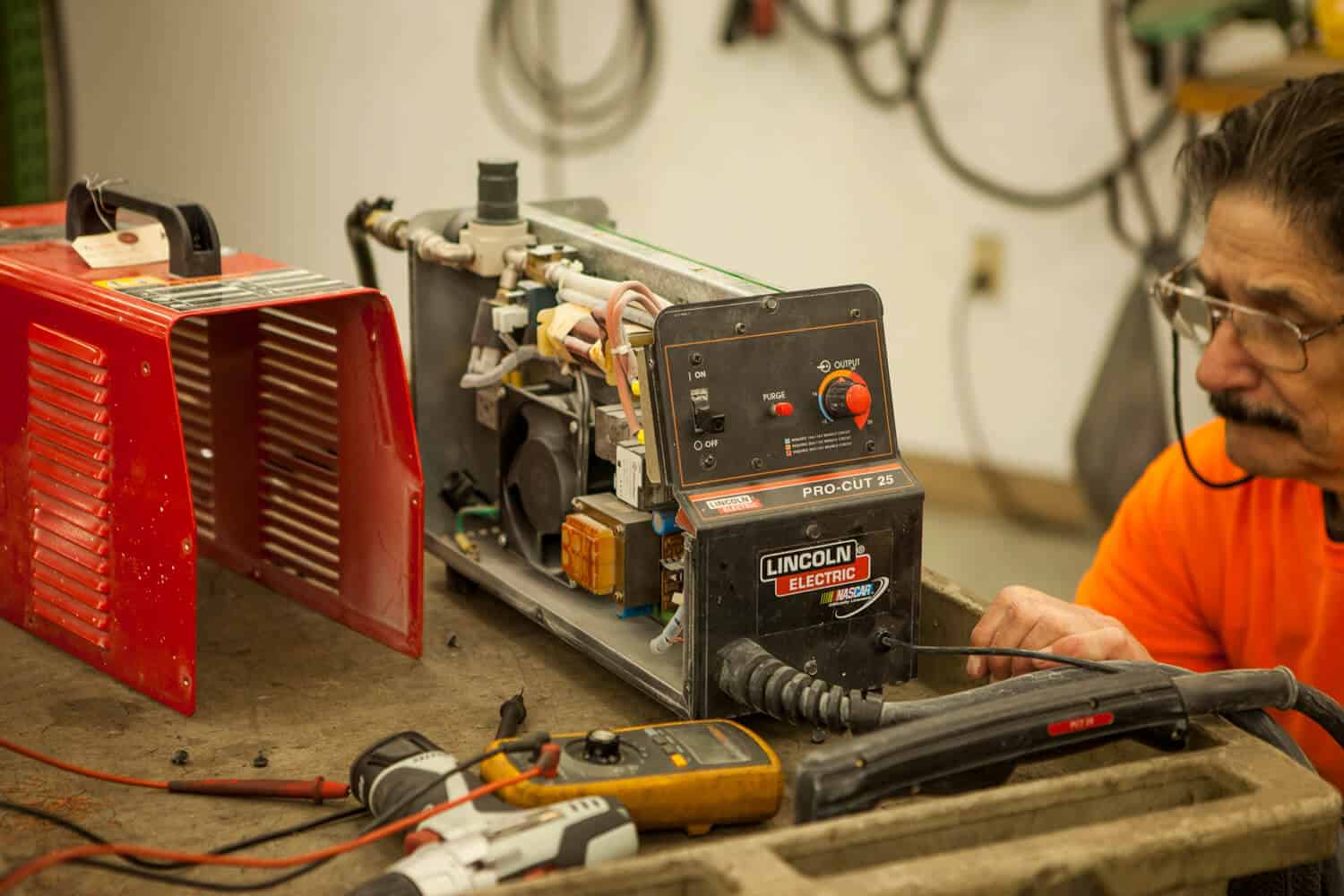Proven steps to prevent porosity in welds with Belgrade Welding
Wiki Article
Typical Welding Repair Issues and Just How to Address Them Efficiently
Welding repairs frequently encounter a series of concerns that can threaten the stability of the end product. Common troubles consist of insufficient penetration, porosity, and imbalance, among others. Each issue provides special challenges that call for specific techniques for resolution. Recognizing these problems is essential for welders aiming to enhance their skills and end results. This conversation will discover these typical welding repair problems and reliable techniques to resolve them.Poor Infiltration
Insufficient infiltration happens when the weld metal fails to totally fuse with the base product, leading to weak joints and prospective architectural failures. This issue frequently originates from not enough warm input, incorrect electrode angle, or improper welding rate. Welders might encounter poor penetration due to a miscalculation of the essential criteria for a certain product density or type. Additionally, contamination on the base material's surface can impede efficient bonding, exacerbating the trouble. To deal with poor infiltration, welders should guarantee appropriate settings on their devices and preserve a tidy job surface area. Regular inspection of welds is suggested to determine any kind of shortages early, permitting prompt corrections and the avoidance of compromised structural integrity in bonded settings up.Porosity
Porosity is a typical problem in bonded joints that manifests as little gas bubbles caught within the weld metal. This issue can jeopardize the honesty of the weld, resulting in decreased stamina and possible failing under tension. Montana Mobile Welding and Repair Welding. Porosity usually occurs from contamination, moisture, or inappropriate welding methods, which allow gases to leave into the liquified weld swimming pool. To attend to porosity, welders need to ensure proper surface area preparation, preserve a tidy functioning atmosphere, and make use of ideal welding criteria. Furthermore, selecting the best filler product and protecting gas can minimize gas entrapment. Routine evaluation and testing of welds can help determine porosity early, assuring prompt corrective actions are taken, therefore maintaining the high quality and reliability of the bonded structureImbalance
Misalignment in welding can arise from different variables, including inappropriate arrangement and thermal growth. Comprehending the origin is vital for efficient resolution. Numerous modification strategies are available to realign components and guarantee structural stability.Reasons of Misalignment
Welding misalignment commonly comes from a selection of underlying issues that can jeopardize architectural integrity. One primary cause is inappropriate fit-up of components prior to welding, which can bring about voids and uneven surface areas. Variations in thermal growth during the welding process can likewise lead to distortion, especially if the products being signed up with have different coefficients of growth. Additionally, insufficient clamping and fixturing may fall short to hold elements safely in position, leading to activity during welding. Poorly conserved devices, including welding makers and devices, might introduce variances in the weld grain, additional adding to imbalance. Ultimately, operator mistake, coming from not enough training or experience, can additionally play a considerable function in developing misaligned welds.Correction Methods Offered
Attending to misalignment properly requires a mix of restorative methods tailored to the particular problems available. One common technique is the usage of jigs or components to hold parts in the proper position during welding, making certain constant positioning. Additionally, preheating the materials can aid minimize distortion and enhance fit-up. For significant misalignment, mechanical realignment methods, such as utilizing hydraulic jacks or clamps, can be employed to correct the position before welding. Post-weld warm therapy may also be essential to eliminate stresses brought on by imbalance. Careful inspection and adjustment during the arrangement stage can avoid misalignment concerns from ending up being substantial troubles, promoting a smoother welding process and boosting overall structural integrity.Distortion
Distortion is an usual obstacle in welding that can emerge from various variables, consisting of uneven heating and cooling. Recognizing the root causes of distortion is crucial for carrying out efficient avoidance strategies. Resolving this concern not only enhances architectural honesty but likewise enhances the overall quality of the weld.Root causes of Distortion
When subjected to the extreme warm of welding, products commonly go through modifications that can result in distortion. This phenomenon mostly occurs from thermal development and contraction during the welding process. As the weld area warms up, the product increases; upon cooling, it acquires, which can create internal anxieties. In enhancement, irregular home heating throughout a work surface can intensify these stress and anxieties, causing warping or flexing. The kind of product additionally plays a considerable duty; steels with differing thermal conductivity and coefficients of expansion might react in different ways, causing unforeseeable distortions. Bad joint style and inadequate fixturing can add to imbalance during welding, increasing the probability of distortion. Comprehending these causes is crucial for effective welding repair work and prevention techniques.Prevention Techniques
Effective avoidance techniques for distortion throughout welding concentrate on managing heat input and ensuring appropriate joint layout. Keeping a constant heat input helps to decrease thermal growth and contraction, which can lead to distortion. Utilizing strategies such as preheating the work surface can likewise minimize the temperature level gradient, advertising consistent home heating. In addition, selecting suitable joint styles, such as T-joints or lap joints, can enhance security and decrease stress and anxiety concentrations. Applying appropriate fixturing to safeguard the workpieces in position further aids in maintaining positioning during the welding procedure. Ultimately, staggered welding series can distribute warm a lot more evenly, preventing localized distortion. By using these methods, welders can significantly lower the possibility of distortion and improve the total high quality of their welds.Fracturing
Splitting is a typical concern experienced in welding fixings, commonly arising from various variables such as incorrect air conditioning prices, product option, or insufficient joint prep work. The occurrence of cracks can significantly compromise the integrity of the weld, bring about potential failings during operation. To address this problem, welders need to initially examine the source, making certain that materials are suitable and appropriately picked for the certain application. In addition, managing the cooling price throughout the welding process is vital; quick air conditioning can generate anxiety and bring about fracturing. Correct joint layout and prep work also add to minimizing the danger. Applying these approaches can boost weld quality and resilience, inevitably minimizing the chance of cracking in finished weldments.
Insufficient Fusion
A substantial problem in welding repair services is incomplete blend, which occurs when the weld steel does not adequately bond with the base material or previous weld passes - Belgrade Welding. This flaw can lead to weak points in the joint, possibly endangering the stability of the bonded structure. Elements adding to incomplete combination consist of not enough heat input, inappropriate welding method, and contamination of the surface areas being joined. To resolve this problem successfully, welders need to guarantee appropriate pre-weld cleaning and surface area preparation, in addition to readjust their welding specifications to accomplish sufficient penetration additional resources and combination. Routine examination throughout the welding process can also aid recognize incomplete fusion early, enabling prompt restorative procedures to improve the general quality of the weldOverheating
While welding repair services can improve structural stability, overheating provides a substantial obstacle that can cause material destruction. Excessive warm during welding can change the mechanical homes of steels, leading to reduced stamina, increased brittleness, and warping. This phenomenon is particularly essential in high-stress applications where structural integrity is paramount. Determining getting too hot can involve visual evaluations for staining or distortion, along with keeping track of temperature during the welding process. To reduce the threats connected with getting too hot, welders ought to employ appropriate strategies, such as managing warmth input, readjusting travel speed, and utilizing appropriate filler products. In addition, implementing pre- and post-weld warm therapies can assist recover material residential or commercial properties and improve the total quality of the fixing, ensuring long-term efficiency and security.Regularly Asked Inquiries
What Are the Usual Signs of a Welding Issue?

Exactly How Can I Test My Welds for Quality?
To evaluate welds for top quality, one can make use of aesthetic evaluations, ultrasonic testing, and radiographic approaches. Each technique guarantees architectural honesty, identifies problems, and verifies adherence to specified standards, ultimately improving the reliability of the bonded joints.What Security Preventative Measures Should I Take While Welding?
When welding, one should prioritize safety by using suitable personal protective tools, making certain correct air flow, securing combustible materials away, preserving a tidy work space, and understanding surroundings to avoid crashes and injuries.Can I Fix a Weld Without Redoing the Entire Joint?
Repairing a weld without remodeling the entire joint is feasible, depending on the damages (Fabrication). Techniques such as grinding, including filler product, or making use of a welding procedure can properly attend to certain flaws while protecting the surrounding frameworkWhat Tools Are Crucial for Efficient Welding Fixes?
Important tools for reliable welding repairs include a welding device, cable brush, grinder, safety gear, clamps, and filler products. Each tool plays an important duty in making sure top quality and security during the fixing procedure. Porosity normally occurs from contamination, dampness, or incorrect welding techniques, which enable gases to get away into the molten weld swimming pool. Badly maintained tools, consisting of welding devices and water welding devices, might introduce disparities in the weld bead, further contributing to imbalance. When subjected to the intense heat of welding, products typically undertake modifications that can lead to distortion. Fracturing is a common issue come across in welding repairs, usually resulting from different elements such as incorrect cooling rates, product option, or insufficient joint prep work. A substantial issue welding robot in welding fixings is incomplete fusion, which occurs when the weld steel does not properly bond with the base product or previous weld passes.Report this wiki page